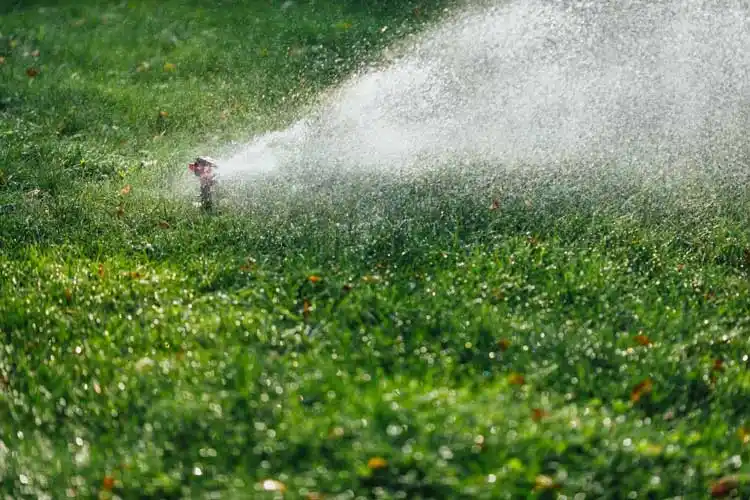How Should I Adjust My Watering Schedule in the Summer?
Summers in Florida are hot and often dry, which can place a lot of stress on our lawns. For that reason, we recommend watering your lawn more frequently as the weather warms up. Aim to water around three times per week to keep the grass from drying out too much. Remember to keep an eye out for signs of dehydration and adjust your irrigation schedule as needed throughout the hot season.
How Much Water Does My Lawn Need in the Summer?
Each lawn is different, so you’ll need to look at factors like grass type and soil conditions to determine exactly how much water your lawn needs during the summertime. While most lawns thrive with 1 to 1.5 inches of water per week, you should regularly monitor your turf’s health. If your lawn is showing signs of dehydration like wilting or yellowing, increase the frequency or duration of your watering sessions. And, if it’s retaining too much moisture, cut back a little.

Need Lawn Care? We Can Help.
Click the button below to leave your information & we'll be in touch in an hour or less.
Pest Control Experts You Can Trust
Leave your information below and we’ll be in touch with your FREE quote!
"*" indicates required fields
*During normal business hours. After hours inquiries will be returned the next business day.
How to Water Your Lawn in the Summer
In the summer, when temperatures are typically higher and rainfall may be less frequent, adjusting your watering schedule is important to ensure that your lawn stays healthy. Here are some tips to adjust your watering schedule during the summer months:
- Increase frequency: In hot and dry conditions, you may need to increase the frequency of watering to provide sufficient moisture to the grass. Instead of watering once or twice a week, you may need to water two or three times a week to prevent the soil from drying out excessively.
- Water deeply: Even though you may need to water more frequently, it’s still crucial to water deeply. This encourages the roots to grow deeper, making the grass more resilient to drought. Water should penetrate the soil to a depth of 6-8 inches to ensure thorough hydration.
- Water early in the morning: Watering in the early morning, preferably between 4 a.m. and 10 a.m., is the best time to minimize water loss due to evaporation. It allows the grass to absorb the moisture before the heat of the day, and the lawn has time to dry out during the day, reducing the risk of fungal diseases.
- Adjust for rainfall: Take into account any rainfall that occurs during the summer months. If your lawn receives significant rainfall, you may need to adjust your watering schedule accordingly. Consider using a rain gauge to measure the amount of rainfall and adjust your watering frequency and duration as needed.
- Consider local regulations: Be aware of any local water restrictions or regulations in your area. Ensure that you comply with these guidelines while adjusting your watering schedule.
Regularly monitor your lawn’s condition, and pay attention to signs of stress such as wilting or changes in color. Adjust your watering schedule as necessary to ensure the grass receives adequate moisture during the hot summer months.
Remember, these are general guidelines, and it’s important to consider your specific climate, soil type, and grass species when determining the appropriate watering schedule for your lawn. Consulting with local lawn care experts or extension services can provide valuable insights tailored to your region.
